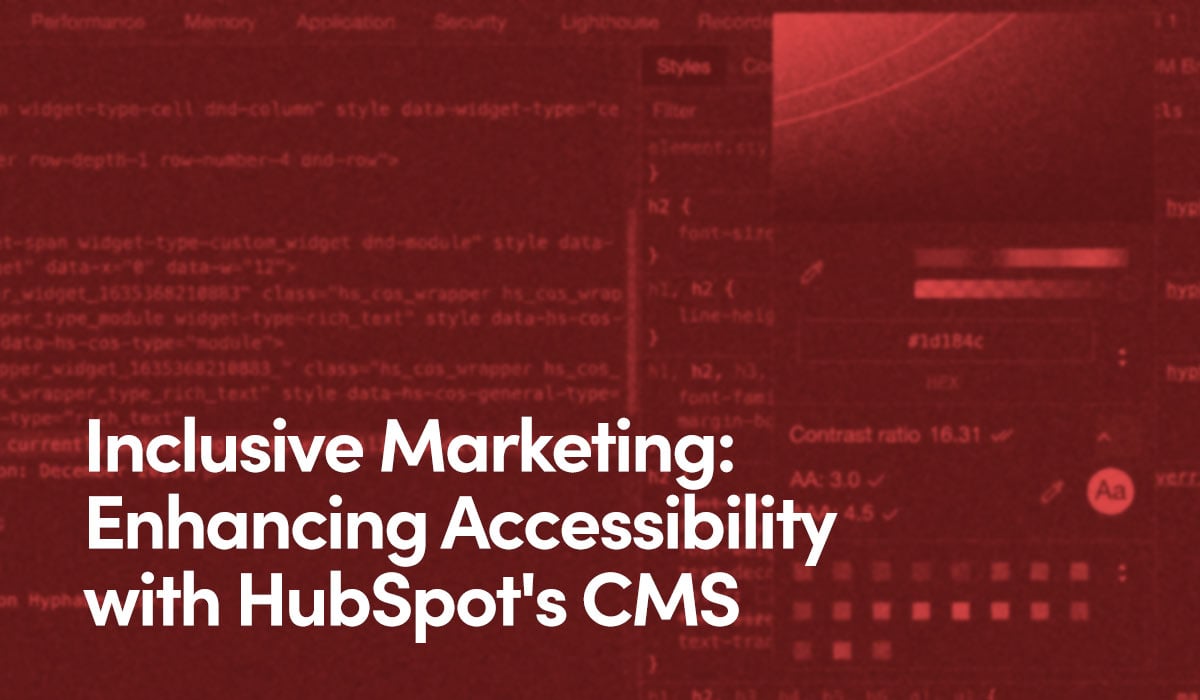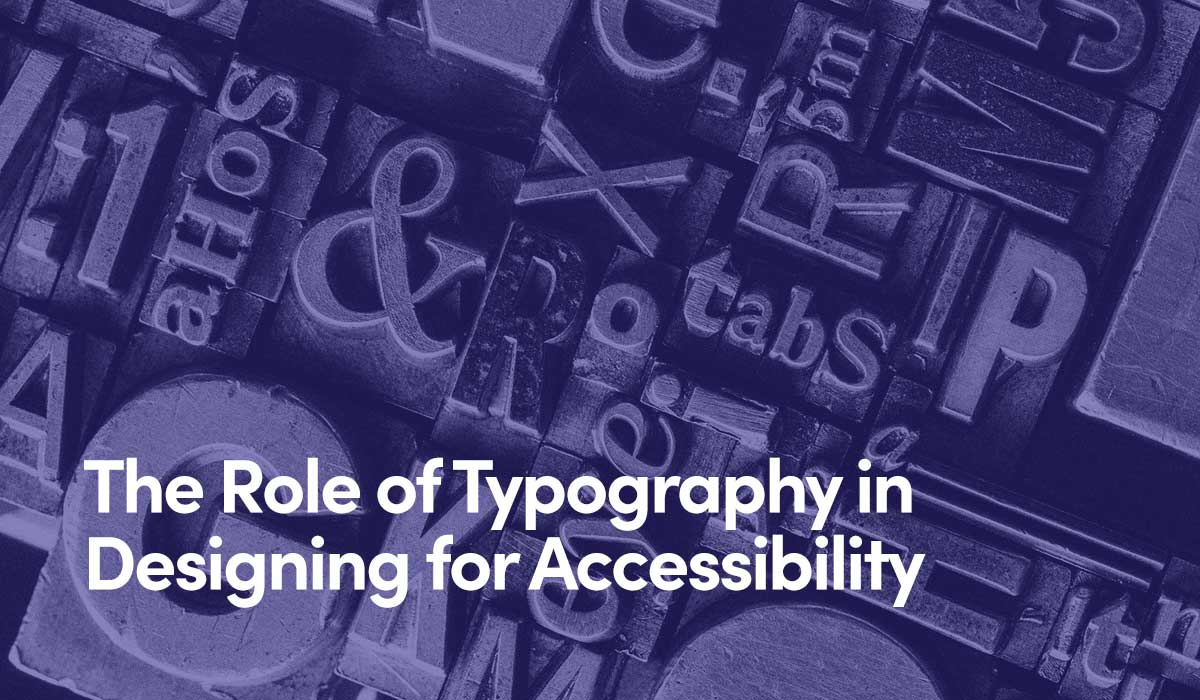An organization’s website is an important aspect of its overall business, serving as a space for connecting with audiences, a tool facilitating sales and customer conversions, and a platform for presenting your unique brand identity to the greater public.
When websites are not designed with accessibility in mind, however, large segments of your audience can have trouble accessing or engaging with your online content, products, and services due to physical or cognitive disabilities—which can lead to lawsuits.
To mitigate the possibilities of legal action, organizations should strive to make all their online content as accessible and inclusive as possible.
What Does It Cost to Make a Website ADA Compliant?
In the 30 years since the passing of the landmark Americans with Disabilities Act (ADA or Act), the lives of millions of Americans with disabilities have improved dramatically. By enshrining rights of equal access to employment opportunities, transportation, commercial facilities, and information一among others一the ADA has enabled people with disabilities (PwD) to integrate across society in unprecedented numbers.
And while the struggle for equal access in the physical world is far from over, the battlefront has shifted online. Now that countless people rely on the internet for many of life’s essentials一business, entertainment, and commerce一ADA compliance in the digital universe has come to the fore.
But what websites are subject to ADA compliance? And what does it cost to make a website compliant?
Most Business Websites Are Subject to ADA Compliance
The U.S. Department of Justice, responsible for enforcing Title III of the ADA covering public accommodations, has opined that Title III jurisdiction includes websites一particularly those involved in "commercial activity"一although it has stopped short of issuing specific regulations.
It’s been up to the courts to decide whether a given website complies with the Act, and there’s been no shortage of high-profile test cases. Successful charges of noncompliance have been brought against Netflix, H&R Block, and Winn-Dixie Stores, among others.
Thus, most businesses under ADA Title III must ensure their websites are ADA compliant.
Measuring Compliance With the Web Content Accessibility Guidelines
When it comes to defining website accessibility, the ADA itself doesn’t provide specific requirements. However, the World Wide Web Consortium (W3C), a membership of international organizations, has since stepped in to provide some clarity.
W3C was created in 1994 to establish common standards across the World Wide Web and spearheads guideline development for digital accessibility through its Web Accessibility Initiative, or WAI. The Web Content Accessibility Guidelines (WCAG) were developed by WAI’s Accessibility Guidelines Working Group and address web content, sites, and app accessibility for people with visual, auditory, speech, physical, cognitive, and neurological disabilities. Adhering to these standards gets you moving in a compliant direction.
The WCAG currently consists of 78 technical recommendations (Success Criteria) intended for web tool and content developers, though anyone can use it as a standard of web accessibility. Success Criteria are organized by four Principles: Perceivable, Operable, Understandable, and Robust. Each Principle is supported by Guidelines, and each Guideline is supported by a portion of the 78 Success Criteria. For example, 1.1.1 refers to:
- Principle 1: Perceivable
- Guideline 1: Text Alternatives
- Success Criteria 1: Non-Text Content
Importantly, Guidelines are organized into three levels of compliance to address different needs and situations. Level A is the lowest accessibility level and doesn’t provide broad access for many situations. Level AA is in the mid-range standard and inclusive of all Level A Guidelines. Level AAA is the highest accessibility level, though generally impossible to achieve with certain types of content.
By testing your website using WCAG, you can determine at what level your content conforms to the Success Criteria, Guideline(s), and, ultimately, the Principles of an accessible website.
Over time, WCAG Success Criteria have evolved. The most current version is WCAG 2.1, published in 2018, with the next iteration (WCAG 2.2.) due for publication in early 2023. All versions are "backward compatible." In short, all content conforming to a later version (WCAG 2.1) also confirms to all previous versions (WCAG 2.0).
What Level of Accessibility Should Businesses Pursue?
While Level A Guidelines include Success Criteria, many users with disabilities still find sites at this level difficult to manage. Thus, WCAG 2.1 AA is the level widely recommended for most businesses. It aligns with ADA provisions and is usable and understandable for most people with or without disabilities. Selected Level AA requirements include:
- Consistent navigation elements across the site
- A logical order of headings
- Color contrast that is, in most instances, at least 4.5:1
- Alt text used for images that conveys meaning
- Form fields with accurate labels
Make Your Website Accessible to Everyone
Is Your HubSpot Site WCAG Compliant?
Protect Your Business With Accessibility Solutions arrow_forwardWhat Impacts the Cost of Making a Website ADA Compliant?
Achieving ADA compliance is mainly a web development exercise, typically quoted at an hourly rate rather than by project. The development time required depends on multiple variables, which are challenging to assess at the outset, making costs difficult to estimate. Variables include:
-
Development Stage. Ensuring a website is accessible is significantly cheaper if accessibility is addressed during the initial site build. This mitigates the imposition of barriers in the first place. Otherwise, remediation involves an additional round of discovery and development with their associated expenses.
-
Site Page Volume. Generally speaking, the greater the number of site pages, the higher the compliance cost.
-
Issue Volume. A compliance audit might identify hundreds or even thousands of issues. However, some may be site-based and others page-specific. For example, suppose color contrast is flagged as a WCAG violation. In that case, each time it appears on the site could count as a unique problem, resulting in hundreds of identical issues contributing to the audit total. A singular fix, such as adjusting the CSS style (programming language Cascading Style Sheets) to improve the color contrast for a particular element, might resolve multiple issues of low-contrasting elements using that color throughout the site.
Fixes to reusable components on the page template or module level can also cascade through the site, where a single fix resolves multiple duplicate violations. Think site navigation: If it’s identified as being in violation, this will pop up as an issue on every page navigation appears. But fixing the navigation on one page will fix it across all pages.
-
Issue Difficulty & Severity. Some issues are difficult to unravel and can take hours or days to resolve. Others are straightforward and can take mere minutes. A reasonable estimate is anywhere from 30 minutes to three hours per issue cluster.
Other issues are severeーthey may be simple to resolve but require individual fixes. For example, a blog environment with hundreds of posts with varying heading orders will require a unique touch for every post, resulting in hours of reformatting.
What Does It Cost to Make a Website ADA Compliant?
While there is no singular answer to this question, an estimated range of costs for remediation to WCAG 2.1 AA is provided below. The lifecycle process generally includes an initial compliance audit, remediation, and ongoing monitoring.
Compliance Audit
A compliance audit involves testing a website’s current level of accessibility compared to (in our case) WCAG 2.1 AA standards. Several free audit tools are available to assist in the process, such as Google Lighthouse, an open source utility within Google DevTools. However, as in many other industries, you’re more than likely to get what you pay for. Sure, free solutions can identify common WCAG violations, such as missing alt text or inconsistent header structures, but if you’re serious about compliance, a more thorough approach is warranted.
The better automated solutions provide more comprehensive audits, analyses, insights, knowledge libraries, and more. Accessibility solutions provider TPGi’s ARC Platform is one such example. Importantly, however, many audited solutions rely on programmatically discernible issues in the code and may only catch 50% to 75% of violations that need to be addressed. The remaining issues may go undetected if not manually checked by an accessibility professional.
Testing the site with a screen reader is also essential to auditing. This will demonstrate how a person with a disability will "see" the site and often reveal issues that could otherwise go unnoticed.
Estimated Cost: $300 to $1,500 or more for an automated solution, depending on the website size and complexity, plus $150 to $250 per hour for review by a trained accessibility specialist.
Remediation
As mentioned, the cost of bringing up a website to current WCAG standards will mainly depend on the variables discussed above. In addition, core pages will often have different needs than a templated blog environment, so the mix between the two will also play a role.
Estimated Cost: $400 per page. This assumes a 50-page site with an average of 20 core pages and 30 blog pages, an "average" range of issues, an average developer fee of $200 per hour, and a 25% overage to account for unexpected issues discovered during testing, required documentation and reporting.
Ongoing Monitoring
Once a website is brought up to standard, the process doesn’t end there. Adjustments must be made as pages are added or changed, and WCAG provisions are updated. Many platforms offer monthly pricing based on usage and number of users, plus add-ons for tutor modules, knowledge libraries, and more.
Estimated Cost: On a standalone basis, this could range from $30 to $100 or more per month plus add-ons.
The Costs of Not Making a Website ADA Compliant
Importantly, any compliance analysis should consider the costs of not making a website ADA compliant, which can be significant if not severe.
-
Limiting Your Customer Base. According to the World Bank, one billion people, or 15% of the world’s current population, experience some type of disability. And in the United States alone, adult PwD control nearly $500 billion in after-tax disposable income per the American Institutes of Research 2018 report "A Hidden Market: The Purchasing Power of Working-Age Adults With Disabilities." A website with barriers preventing these potential stakeholders from access could mean leaving considerable sums on the table.
-
Ignoring a Moral Obligation. Preventing PwD access to a website is an act of exclusion and inconsistent with personal and brand values such as equity, inclusion, and fairness. The damage to reputation, while hard to quantify, can be extreme.
-
Risk of Litigation. The cost of dealing with a legal challenge to website compliance can often be significantly higher than the cost of remediation一not only in terms of settlements or judgments一which have tended to be hundreds of thousands of dollars and more一but again, in loss of reputation.




